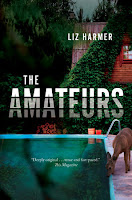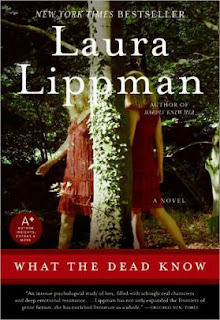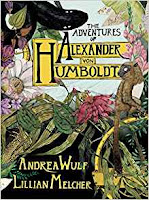Britta Lundin is a TV writer, author, and comic book writer. She currently writes on the hit CW show
Riverdale. Her YA book
Ship It, about a gay teenage fanfiction

writer, is described as “the book that fandom has been waiting for, and the lived-in, fleshed-out portrait it deserves.” A longtime fanfiction reader and writer herself, she is still passionate about fan communities and shipping. Before becoming a writer, she worked as a political organizer for organizations such as MoveOn.org and a digital media producer for Geek & Sundry and Nerdist. She earned a BA in Political Science from Reed College in Portland, Oregon, and an MFA in Film Production from the University of Texas at Austin. When not writing, she spends her time reblogging memes and analyzing the work of One Direction and its members. Originally from a small town on the Oregon coast, she now lives in Los Angeles with her wife.
At Tor.com Lundin tagged
five favorite books about fandom, including:
Grace and the Fever by Zan Romanoff
Real Person Fiction (RPF) / Bandfic
Grace and the Fever follows teenager Grace, who is deep in the fandom for boyband Fever Dream, which has long been deemed uncool by her nonfandom (read: civilian) friends. In a fantasy-like coincidence, Grace accidentally meets the lead singer one day and gets swept up in his world of celebrity and backstage drama, all while trying to  reconcile her current unbelievable level of access to her favorite band with her inner fangirl who is freaking the hell out.
reconcile her current unbelievable level of access to her favorite band with her inner fangirl who is freaking the hell out.
Beautifully written, Grace and the Fever brilliantly weaves together the RPF self-insert fantasy of suddenly finding yourself friends with the people you’ve been fanning over for years with the real-world truths of how hard it is being in the spotlight. Like Almost Famous for the boyband set, it’s a fun and emotional peek behind the curtain of music celebrity. It’s also generous about fandom while still being clear-eyed about the ways fans can overreach or cross the line. Romanoff is clearly working from a personal and intimate knowledge of fandom, which makes it an authentic and loving portrait of the community.
Read about
another entry on the list.
The Page 69 Test: Grace and the Fever.
--Marshal Zeringue
 Liz Harmer's debut novel is The Amateurs. She is working on a second novel, and a story collection, which was a finalist for the 2014 Flannery O'Connor Short Fiction Award.
Liz Harmer's debut novel is The Amateurs. She is working on a second novel, and a story collection, which was a finalist for the 2014 Flannery O'Connor Short Fiction Award.a sundial in the middle of a large property reads “WHAT IS THIS WORLD?” Indeed. One horrible rich person starts receiving visions and the other horrible rich people become her believers, even as they snipe at each other. The Sundial offers humor, cultish behavior, and brutal commentary: “Only rabid animals and humans turn on each other,” one character thinks. It delivers the empty earth awe feeling filtered through a particularly WASPy stiff upper lip.


















































